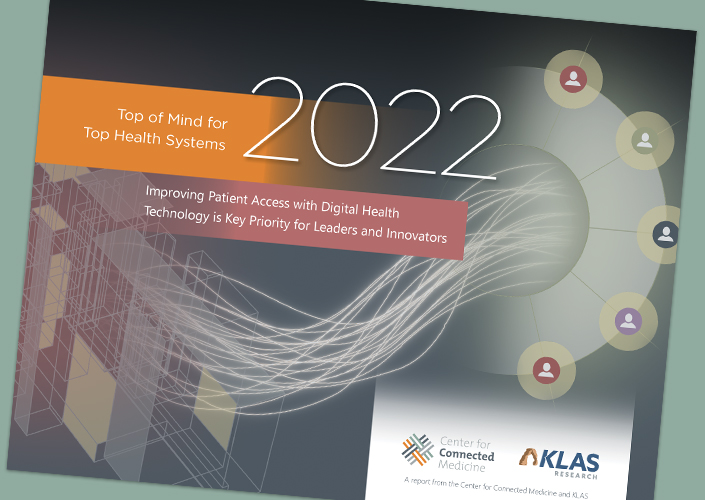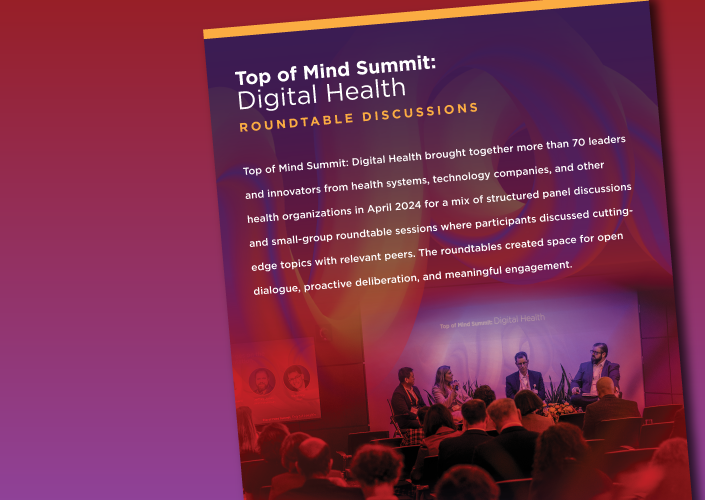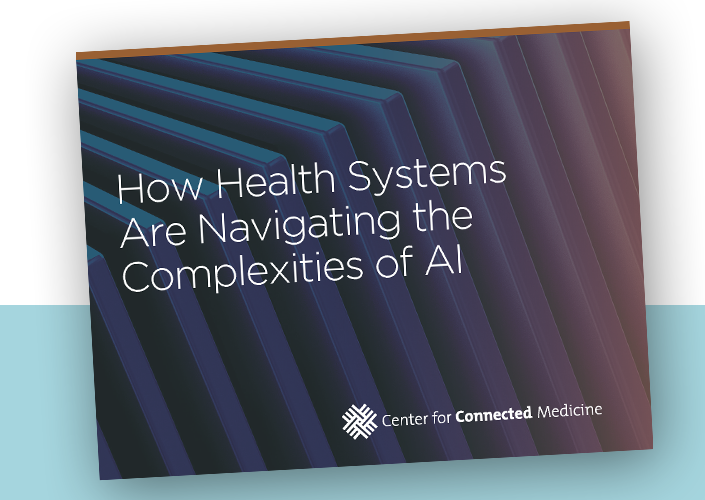Download full report to read why health system leaders and innovators think health technology best poised to solve challenge of patient access
Improving patient access to medical services is a top priority for health system leaders in 2022 as they look to make it easier and more convenient for consumers to engage with their health and find the right care at the right time.
According to new research from the Center for Connected Medicine (CCM), which can be downloaded from the link above, patient access was identified by health system leaders as the challenge in health care that can be best addressed with technology in the coming year.
The CCM’s “Top of Mind for Top Health Systems 2022” research report examines patient access solutions and strategies being considered and deployed at health systems to deliver a more consumer-friendly approach to care.
[PANEL DISCUSSION: Experts discuss patient access and key findings of Top of Mind research]
‘Meeting patients where they are’
The report is being released as the COVID-19 pandemic continues to not only spur innovation at health systems, but also impede traditional approaches to care delivery. Research respondents identified the need for more efficient use of resources and growing consumer demands as the leading reasons for pursuing patient access technology.
“We’re acknowledging the need to engage with consumers earlier in the care journey if we’re going to improve health and wellness. In order to accomplish this, health care needs to do a better job of meeting patients where they are – whether that’s in the digital world or by making it easier to schedule and access in-person care,” said Rob Bart, MD, Chief Medical Information Officer at UPMC.
Key findings from the Top of Mind research
Among the key findings from the research on patient access:
- Nearly all respondents (99%) identified improving patient access as a “high” or “very high” priority for their health system, and more than 85% indicated their health system is likely to invest in patient access technology.
- Telehealth services and patient reminders were cited as the most utilized technology to improve patient access, followed by an online provider directory, online bill-pay and self-scheduling tools.
- Patient financial experience vendors are seen as valuable but aren’t widely used; only 17% of respondents said their organization was using such a vendor.
- Nearly two-thirds (64%) of respondents agreed that greater price transparency can improve patient access. But to be valuable for patients, these efforts need to provide better visibility of patients’ out-of-pocket costs.
Conducted in partnership with KLAS Research, the Top of Mind research included interviews with 72 leaders from 67 health systems across the United States. The respondents included C-suite level executives, vice presidents, and directors, mostly in clinical information technology, digital strategy, and business roles.
The Top of Mind research defines patient access as technology that helps patients access and receive health care in an effective, convenient, and secure way — both for facilitating in-person and virtual care — and includes solutions such as self-scheduling, telehealth, remote patient monitoring, bill-pay, and price transparency tools.
Top of Mind Research Advisors
CCM extends special thanks to its Top of Mind Research Advisors for their expert insights and guidance:
- Rob Bart, MD, Chief Medical Information Officer, UPMC
- Cindy Bergevin, Head of Global Enterprise Marketing for Healthcare, Nokia
- Chris Carmody, Senior Vice President, Information Service Division, UPMC
- Katie Scott, Vice President of Digital Strategy, UPMC Enterprises
- Mark Zhang, DO, Associate Chief Medical Information Officer for Digital Innovation, Brigham and Women’s Hospital
More about the CCM’s Top of Mind program
Watch the CCM’s expert panel discussion on patient access and key findings of Top of Mind research



